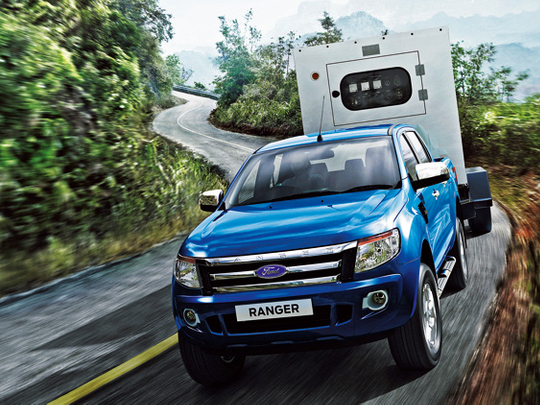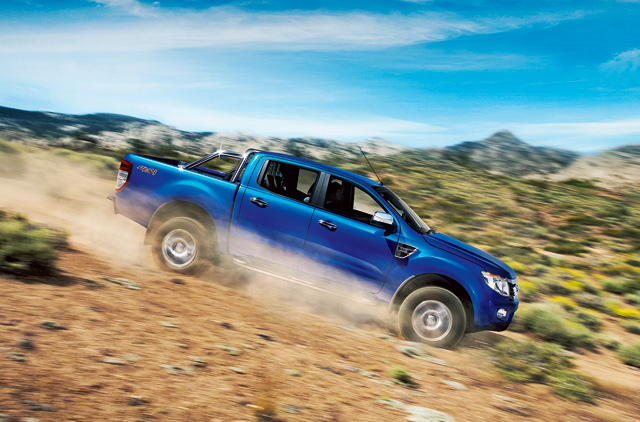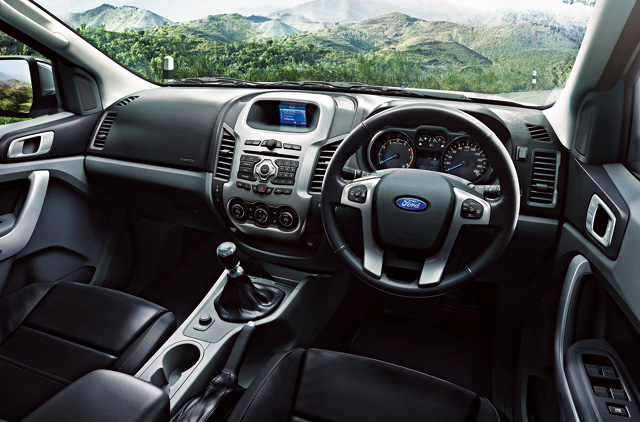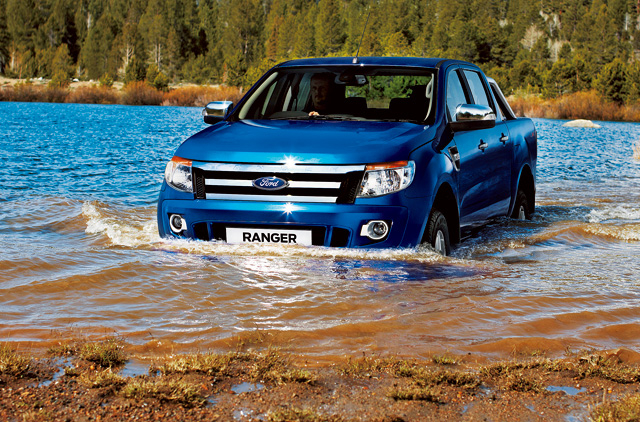
Ford's Ranger pick-up has long been a popular choice, although recent years have seen it being overtaken in some areas by more advanced rivals.
That's all about to change with the arrival of the Blue Oval's latest Ranger variant. Product cycles in the commercial sector might not evolve with the same lightning pace of most cars, but when there's a new pick-up in town the improvements are usually significant.
And so it proves with the new Ranger. Ford is touting this Ranger as a global vehicle — developed in Australia, tested around the world, built in a wide variety of production facilities — and it unashamedly adopts the front-end styling of its larger American cousins.
This F150-like approach hasn't continued with the choice of engines, however. Diesel is the order of the day, with the likely best-selling 2.2-litre 150 horsepower unit joined by a beefy 3.2-litre, 200-horsepower six-cylinder unit. For those with a need to save some serious cash, there's also a 125-horsepower version of the four-cylinder unit.
Whichever one you choose, there's now a six-speed manual transmission for all Rangers plus a six-speed auto for selected variants. And as you'd expect, there's also a choice between rear and four-wheel drive. The latter boasts a simple rotary control allowing you to switch between two and four-wheel drive on the move, plus a stop-to-change from high to low and visa versa.
Being a clean sheet design, this Ranger has clearly been influenced by the performance of its rivals. In popular Double Cab form, the pick-up boasts significant improvement in rear-occupant legroom, making it more suitable if it's going to be the only vehicle on your drive.
There's also plenty of room up front in what is a noticeably more car-like cabin. The various materials used are of a much higher quality than before, while the Ranger's controls and displays could have been lifted straight out of a Focus. The same can be said for the wider choice of standard and optional equipment on offer, which runs to car-like kit such as MP3-compatible audio units, climate control, parking sensors and a reversing camera.
While these premium elements will help make the time spent behind the wheel more enjoyable — remember, for many, the Ranger's cabin will double as a mobile office — it will always be judged on its performance on and off the road.
In this area there's no question that the latest Ranger is streets ahead of its predecessor. Ford has aimed for a balance of refinement and ability, with the resulting performance on tarmac akin to that of a mid-size SUV. Ford's engineers have done an excellent job of minimising pitch and roll despite the Ranger's lofty stance.
The Ranger's steering is now more accurate and delivers far less kickback than your average off-roader, which is good for refinement and reducing driver fatigue on long journeys on and off road.
Engine performance is another area that's taken a considerable leap forward. As with all forms of transport, economy, refinement and emissions have been important aspects of the development process. On a usability front, both the 2.2 and 3.2-litre units lack the stereotypical rattle and grumble of diesel units from the past, with the 2.2 unit displaying an above-average smoothness and willingness that belies its modest 150-horsepower output.
Off road, the Ranger continues to impress, helped by a class leading wading depth and the ability to switch between two- and four-wheel drive on the fly. The pick-up's compliant suspension soaks up even the largest bumps and depressions with ease, and the electronic hill descent feature allows for stress-free running up and down steep and potentially slippery slopes. Factor in the generous helping of traction and stability aids and even novice off-roaders should feel at ease on a wet and windy construction site. Available in single, double and super cab configurations depending on how you want to vary the cabin to load bay space ratio, the flexible nature of the Ranger should make it an easy pick-up to live with. It's also been configured to be a class leading tow vehicle (up to 3,340kg) and can carry a maximum payload of 1,340kg.
It's leagues ahead of its predecessor, more refined, easier to live with and considerably more capable. That it presents a bolder, more distinctive face to the world is the icing on the cake.














